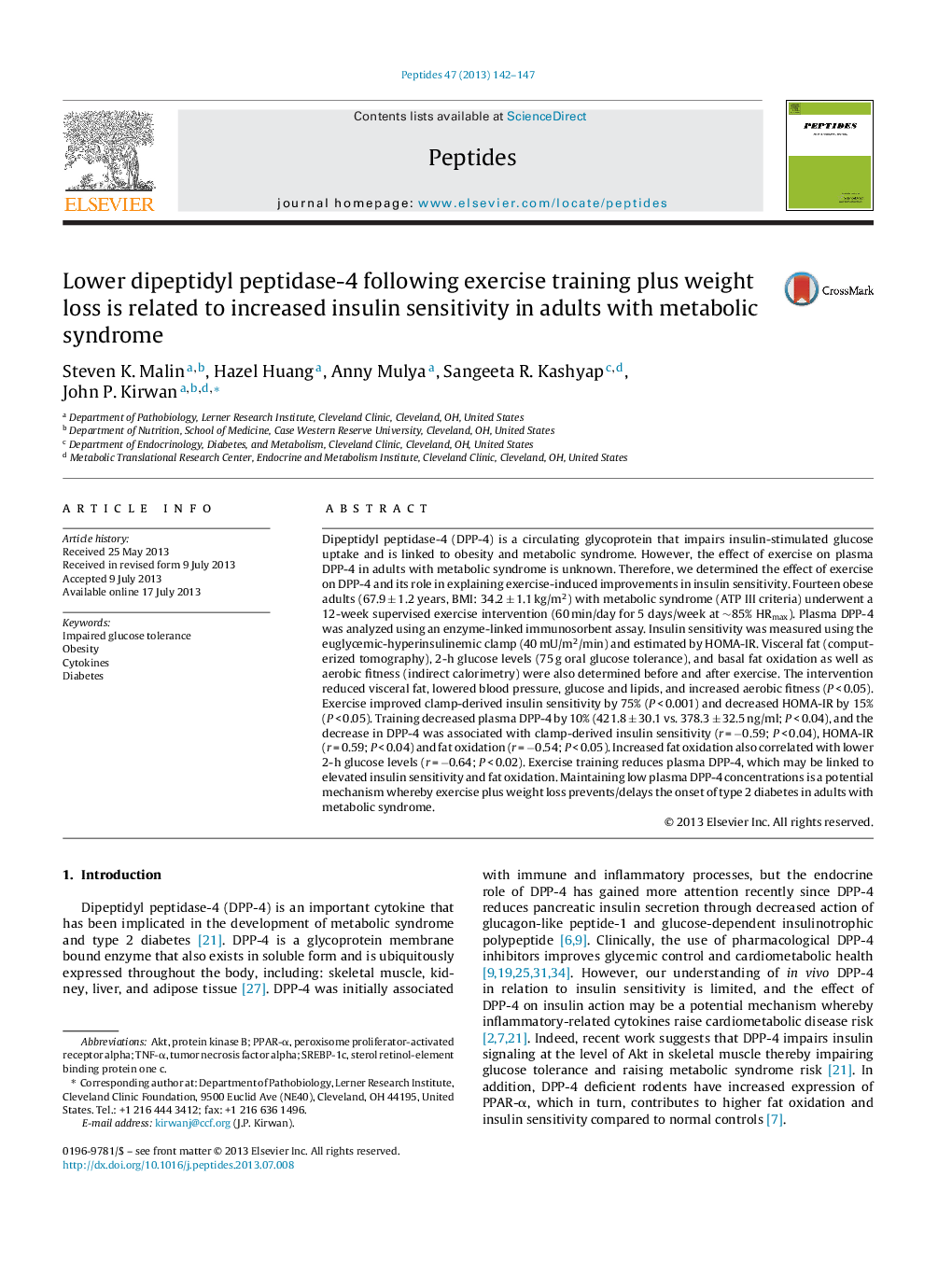| کد مقاله | کد نشریه | سال انتشار | مقاله انگلیسی | نسخه تمام متن |
|---|---|---|---|---|
| 8348579 | 1541732 | 2013 | 6 صفحه PDF | دانلود رایگان |
عنوان انگلیسی مقاله ISI
Lower dipeptidyl peptidase-4 following exercise training plus weight loss is related to increased insulin sensitivity in adults with metabolic syndrome
ترجمه فارسی عنوان
کاهش تمرینات ورزشی دایپتیدیل پپتیداز 4 به اضافه وزن کاهش یافته است به افزایش حساسیت به انسولین در بزرگسالان مبتلا به سندرم متابولیک
دانلود مقاله + سفارش ترجمه
دانلود مقاله ISI انگلیسی
رایگان برای ایرانیان
کلمات کلیدی
SREBP-1cPPAR-αperoxisome proliferator-activated receptor alpha - آلفای گیرنده پرولیفراتور فعال فعالAkt - آکتimpaired glucose tolerance - اختلال تحمل گلوکزDiabetes - بیماری قندtumor necrosis factor alpha - تومور نکروز عامل آلفاCytokines - سیتوکین هاTNF-α - فاکتور نکروز توموری آلفاObesity - مرض چاقیprotein kinase B - پروتئین کیناز B
موضوعات مرتبط
علوم زیستی و بیوفناوری
بیوشیمی، ژنتیک و زیست شناسی مولکولی
زیست شیمی
چکیده انگلیسی
Dipeptidyl peptidase-4 (DPP-4) is a circulating glycoprotein that impairs insulin-stimulated glucose uptake and is linked to obesity and metabolic syndrome. However, the effect of exercise on plasma DPP-4 in adults with metabolic syndrome is unknown. Therefore, we determined the effect of exercise on DPP-4 and its role in explaining exercise-induced improvements in insulin sensitivity. Fourteen obese adults (67.9 ± 1.2 years, BMI: 34.2 ± 1.1 kg/m2) with metabolic syndrome (ATP III criteria) underwent a 12-week supervised exercise intervention (60 min/day for 5 days/week at â¼85% HRmax). Plasma DPP-4 was analyzed using an enzyme-linked immunosorbent assay. Insulin sensitivity was measured using the euglycemic-hyperinsulinemic clamp (40 mU/m2/min) and estimated by HOMA-IR. Visceral fat (computerized tomography), 2-h glucose levels (75 g oral glucose tolerance), and basal fat oxidation as well as aerobic fitness (indirect calorimetry) were also determined before and after exercise. The intervention reduced visceral fat, lowered blood pressure, glucose and lipids, and increased aerobic fitness (P < 0.05). Exercise improved clamp-derived insulin sensitivity by 75% (P < 0.001) and decreased HOMA-IR by 15% (P < 0.05). Training decreased plasma DPP-4 by 10% (421.8 ± 30.1 vs. 378.3 ± 32.5 ng/ml; P < 0.04), and the decrease in DPP-4 was associated with clamp-derived insulin sensitivity (r = â0.59; P < 0.04), HOMA-IR (r = 0.59; P < 0.04) and fat oxidation (r = â0.54; P < 0.05). Increased fat oxidation also correlated with lower 2-h glucose levels (r = â0.64; P < 0.02). Exercise training reduces plasma DPP-4, which may be linked to elevated insulin sensitivity and fat oxidation. Maintaining low plasma DPP-4 concentrations is a potential mechanism whereby exercise plus weight loss prevents/delays the onset of type 2 diabetes in adults with metabolic syndrome.
ناشر
Database: Elsevier - ScienceDirect (ساینس دایرکت)
Journal: Peptides - Volume 47, September 2013, Pages 142-147
Journal: Peptides - Volume 47, September 2013, Pages 142-147
نویسندگان
Steven K. Malin, Hazel Huang, Anny Mulya, Sangeeta R. Kashyap, John P. Kirwan,
